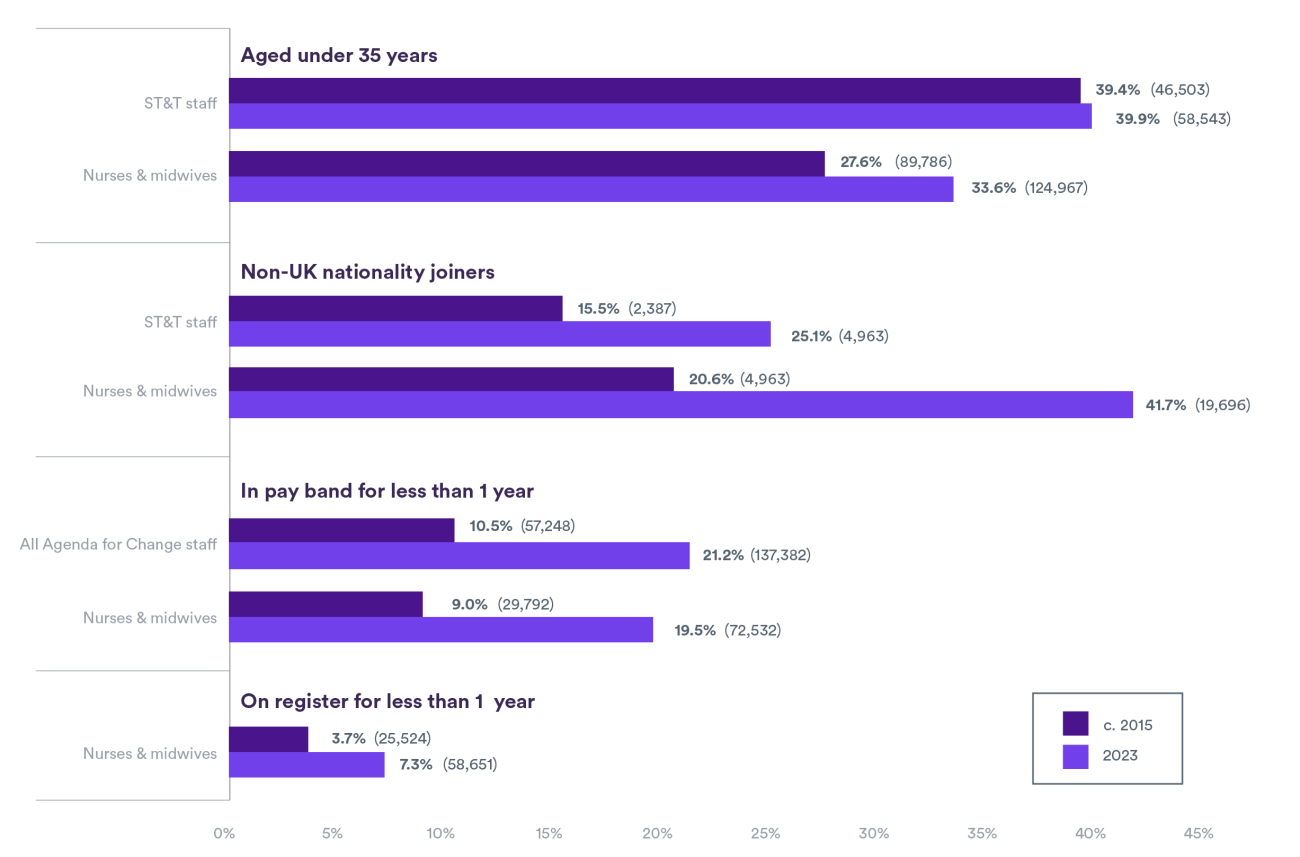Improved NHS productivity is firmly on the political agenda following the Chancellor’s Spring Budget, with the central argument being that the health service has seen increases in funding and staffing, yet the number of patients being treated in hospital has not improved accordingly. And, while on the face of it, there has been a net increase of NHS staff, it is important to note – as best we can – the changing levels of experience in the workforce and how this may be impacting on productivity.
So, how have the experience levels of the NHS workforce changed? This is surprisingly difficult to measure, but there are some ways to attempt to build a picture of this change.
We know that more clinicians are new to the profession in the UK. This can be inferred from the number on the professional register for less than a year – for nurses and midwives, this increased by over 33,100 in the five years to 2023. While they accounted for one in 27 of all registrants in 2018, this has now increased to around one in 14.
As well as this, more staff are new to their seniority level. While some staff will be promoted while working in the NHS, the proportion of nurses and midwives who have spent less than a year in their pay band has increased by 11 percentage points since 2015. Although the size of the workforce has increased over this time, this equates to some 42,700 more nurses and midwives being new to their band.
And, while some new joiners already have experience working as a nurse or a midwife overseas, they are less likely to have direct experience of working in UK health services. Those with a non-UK nationality comprised over two in five (42%) nurse and midwife joiners in 2023 – this was around one in five (21%) six years prior. Similarly – but not as starkly – non-UK joiners to the scientific, therapeutic and technical workforce (such as physiotherapists, radiographers and occupational therapists) have increased from around one in six (16%) to one in four (25%) over the same period.
There are also more younger staff, with nearly 35,200 more NHS nurses and midwives and over 12,000 more scientific, therapeutic and technical staff aged under 35 years old relative to 2015. Over a third (34%) of all nurses and midwives are now in this age group, and while the proportion of scientific, therapeutic and technical staff is higher (40%), this has remained largely unchanged compared to eight years before.
A combination of a higher proportion of staff being new to their career, new to the NHS and new to their role provides important context in ongoing attempts to understand the NHS’s productivity problem. These figures can be used as a stepping stone to additional questions about how this changing picture is affecting patient care and, more importantly, how the information can be used to design focused interventions to improve the situation. However, it remains a complex picture, and this only attempts to highlight one piece of the puzzle.
Suggested citation
Rolewicz L (2024) "The changing experience levels of NHS staff". Chart of the week, Nuffield Trust.

